Looking to find the perfect boat for fishing in the flats? Then you might find yourself looking at a microskiff.
Compact and narrow, the microskiff has become a top choice for anglers hoping to explore the calm waters.
But what exactly is a microskiff? And how is it different from a small skiff?
A microskiff is a slender and typically flat-bottomed boat, designed for fishing in quiet and shallow waters. Able to fit just one or two people, the microskiff is known for being practical and portable.
But despite the growing popularity, there’s yet to be a consensus on exactly how you define a microskiff.
If you’re curious about the microskiff, read this comprehensive guide. We’ve taken a look at what a microskiff is, why you might want one, and what options are available on the market.
With the right microskiff, an adventurous angler can find fish no one else has access to!
All About Microskiffs — What Are These Small Boats?
A microskiff is a thin and long boat best used for fishing in calm, flat areas. But that’s about as good a definition as you’ll find.
If you’re interested in what specifications can be used to define a microskiff, you’re going to find yourself in the middle of a great deal of debate.
The microskiff, or micro skiff, is a boat without a particularly clear definition.
There’s no distinct line between the small flats skiff and the microskiff, with anglers and boating enthusiasts struggling to come to a consensus.
With that said, there are some clear features of the microskiff. For a start, it has to be a slender boat, with a narrow beam.
In terms of length, a microskiff will rarely be more than 17 feet, but some will argue that longer boats fit the definition.
The body of the microskiff is flat, sometimes with molded seating built in.
Roughly one or two passengers can fit comfortably on a microskiff, and they’ll need to take limited gear if they want the boat to move well.
The microskiff is typically very light, so can get a good deal of speed from even a small motor.
Microskiffs typically have a motor with a capacity of around 30 HP, but some will go as high as 50 HP.
As you can see, it’s not easy to find any clear and defining features for the microskiff itself.
One thing there is a pretty clear consensus on, however, is what the microskiff is used for.
A microskiff is designed to be used when you want to fish in flats. You’ll typically see a microskiff on quiet rivers and waterways, or in protected areas.
They’re suited for calm water, and will not handle the ocean well. But if you’re out of the waves and wind, the microskiff can be sturdy and swift, moving well over the water.
What Are The Different Types Of Microskiff Boats?
As we’ve made it clear that there are no clear definitions of the microskiff, you might wonder how there can be different types. But even within the limited specifications, you can still get quite a range of microskiffs.
These terms are mostly used to describe how easy to transport the microskiff is, and you’re likely to see them used by dealers and enthusiasts.
- Full-Sized
The largest of the small boats, a full-sized microskiff will need a trailer to get about, and you have to launch from a boat ramp. Expect to find an outboard or trolling motor.
The downside to the full-sized microskiff is the lack of portability, and they can be tricky to launch in shallow areas. The upside is increased stability, and room for two passengers - Ultralight
The mid-sized microskiff, better known as the ultralight, is the most popular type of microskiff. They tend to weigh around 150 pounds and can come with motors or without.
On land, they can be tricky to move about, but easier to transport than the full-sized microskiff.
Launching and steering the ultralight microskiff is easier than the full-sized, but they lack some performance quality. - Car-top
As you would expect from the name, the car-top is the lightest of the microskiff. It can fit on top of most cars, and two people will find it easy to carry.
The average car-top microskiff will weigh less than 100 pounds, and might even fit in an SUV. Launching is easy due to the size.
The Best Microskiff Boats
We’ll go into all the reasons why you might want a microskiff later, but here are some of the best on the market that might catch your eye.
OUR TOP PICK
Hell’s Bay Glades Skiff
The Hell’s Bay Glades is on the long side for a microskiff at a length of 17’ 8”, but it’s still considered to be one of the most popular microskiffs on the market.
At a weight of 440 pounds, you might expect it to be sluggish, but instead, it glides smoothly in even shallow waters.
The Hell’s Bay Glades exhibits all the best characteristics of a microskiff. It has the subtlety and stealth of a canoe, combined with the comfort of a skiff (including seat cushions and carpeting).
The Carbon Innegra hull and Vacuum-Infused Core Cell construction gives this microskiff fantastic strength. You’ll need a trailer to get it around, but it moves with ease once in the water.
OUR TOP PICK
East Cape Glide
The 17’ East Cape Glide is made for shallow waters and can be launched pretty much anywhere. It sits below the waterline thanks to a 4-degree deadrise, and it slides in with a sharp entry.
The Glide can be equipped with a motor up to 30 HP, and the lightweight accommodates a decent amount of speed.
For anglers who enjoy sneaking up on their catch, the East Cape Glide is quiet through the water.
Stealth and speed come together in a microskiff for enthusiasts. Expect to fit one to two anglers on board.
OUR TOP PICK
Gheenoe Classic
Gheenoe is one of the premier microskiff brands, with even the largest of their skiffs still maxing out at 16’.
The Classic is the mid-sized Gheenoe, at 15’ 6” in length. The 25 HP motor gives it power, while the longer length provides you with comfort.
Prepare for quick movement across the water, and a basic skiff that can be easily upgraded.
The Gheenoe Classic feels stable in the water, with a 55” beam and a weight of 245 pounds.
Get it outfitted with the poling platform, for the best view of those fish that the Classic can speed you towards.
If you fancy something even smaller, the Gheenoe 13’ is a car-top microskiff with decent stability.
OUR TOP PICK
Dragonfly Marsh Hen 15
The Dragonfly Marsh Hen is designed to outperform other microskiffs, thanks to a hull design that balances the comfort of the angler with the potential for fishing.
At 15’ long, there’s a decent size to this microskiff, but not enough to sacrifice movement.
It goes fast and quiet, getting you away from the crowded fishing areas, and traveling with ease.
With a 50” beam and a weight of 200 pounds, the Dragonfly Marsh Hen is surprisingly stable.
It handles well, with a rounded chine providing a quiet entry.
A 9.9 HP engine gives it less power, but the reduced weight still allows the Marsh Hen to reach a decent speed.
EDITORS CHOICE
Ankona Caicos
The Caicos by Ankona is a microskiff that prides itself on simplicity. It’s a larger microskiff, reaching a length of 16’ 7”, with a beam of 68”, and a hull that weighs 350 pounds.
But because Ankona has focused on using lightweight yet durable materials, the Caicos can still move at a surprisingly good speed.
For families looking for a microskiff, the Ankona Caicos is a good option. It has a weight capacity of 425 pounds and is able to hold 3 people.
The carbon hybrid laminate that’s used in the build gives the microskiff stability, without adding any excess weight.
BEST VALUE
Beavertail Skiffs Micro
The microskiff from Beavertail takes all the best qualities of its popular Mosquito line and simplifies them into a micro package.
Beavertail claims that this is the purest fishing platform they’ve ever built, and the 5” draft with a full load will show you why.
With a micro like this, you can find fish no one else can.
The Beavertail Micro is 16’ 8” long, with a 60” beam and a gross weight of 400 pounds.
Reaching up to 30 HP, it can move fast for a larger microskiff and provides you with the Beavertail standard dry ride.
RUNNER UP
Bote Rover
Only 3 inches draft makes the Bote Rover Microskiff a sandbar winner and allows you to reach places other boats couldn’t dream of.
Using the paddle microskiff, you have the opportunity to sneak up on your catch, while the option to fit an engine gets you there fast.
Made using Gatorshell technology, the Bote Rover is strong, fast, and silent.
14’ length with just a 40” width, the Bote Rover is compact and efficient.
The Deep-V nose can cut across the water while paddling, and lifts up for smooth turns while under power.
Should You Get A Microskiff Boat?
Microskiffs are becoming increasingly popular, with owners attracted to the ease of movement and accessibility. If you’re unsure about microskiffs, check out these pros and cons.
Pros
Price
One of the major advantages of a microskiff is the low price compared to larger vessels.
A microskiff can cost between $500 and $20,000, with a thriving second-hand market.
And once you’ve bought your microskiff, additional costs are also reduced.
Repairs can be cheap, and with minimal fittings, there’s minimal maintenance.
For a car-top microskiff, you don’t even have to pay for transport equipment.
Overall, the microskiff can be a low-cost boat for an adventurous fisherman.
Ease Of Use
For anglers who’ve never worked with boats before, the microskiff is a fantastic starting place.
They’re easy to operate and can deliver an impressive performance with minimal effort. They also provide a great opportunity to learn.
Experienced boaters will enjoy how relaxing the microskiff can be — you can really focus on the fish, not on the skiff.
Portability
The lightweight car-top microskiff can be transported with ease, while even the largest full-size microskiffs only need a small trailer.
That means the adventurous angler can take their boat wherever they want to go. With portability also comes easy launching.
Many of the best microskiffs can be launched practically anywhere.
The reduced weight also makes microskiffs easier to handle out of the water.
Compact and narrow, the microskiff can navigate through the shallowest of waters, and across underwater obstructions.
For anglers, this is one of the major selling points of the microskiff — that and the low draft. In some cases, a microskiff can navigate a draft of 3 inches.
You might be wondering why this matters. Surely there aren’t any fish in that water?
But by being able to navigate through the shallowest of waters, a microskiff can give you access to places other fishermen can’t reach.
Versatility
A removable outboard is common on a microskiff and turns it into an incredibly versatile vessel.
When the outboard is gone, the lightweight microskiff can be used with a paddle.
This grants you access to no-motor zones, without needing to buy a whole new boat.
Efficiency
Very few microskiffs accommodate a motor with more than 50 HP, and even 30 HP is considered a lot. But because they’re so compact, the microskiff can still gain speed with a smaller engine.
Low power with good speed shows the incredible efficiency of a microskiff.
Cons
Comfort
The minimal size of the microskiff is its greatest feature, but that does come with its own drawbacks.
For a start, expect a less comfortable seat. Ergonomic cushions, backrests, and padding will often be sacrificed to keep weight down.
There’s also little room to move on a microskiff, especially if you’re heading out with a friend.
Expect somewhat cramped conditions, as you find room for yourself and your gear.
Finally, the ride on the microskiff can be rough going. Although many of them do have decent stability, especially if you’re paying for a good brand, they can’t compare to a larger boat.
Storage Space
As well as having reduced space for you and any passengers, there’s typically minimal storage on the microskiff. Reduced cargo is a necessity, especially as you don’t want to add too much weight.
This can slightly impair the versatility of the microskiff — when you have to pack lighter, there are fewer options for exploration.
Limited Usage
It’s very rare to find a microskiff that can handle anything rougher than flat waters. The microskiff is designed to be used on calm rivers and sheltered waters, and shouldn’t be taken on the ocean.
Although there are some microskiffs that can tackle waves, these are a rarity.
Some models can’t be fitted with engines, and can only be used for poling or paddling.
Final Thoughts
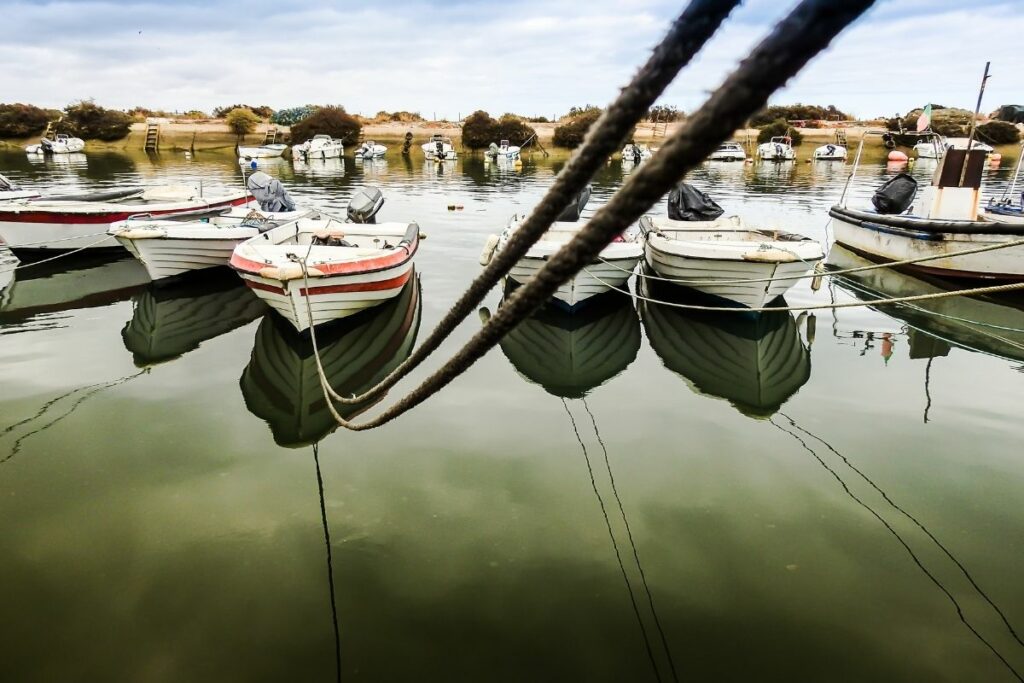
For an angler interested in ease, the microskiff presents a fantastic opportunity. These lightweight and compact vessels can navigate through shallow waters and across calm rivers, finding fish that evade larger boats.
Easy to use for even first-time boaters, the microskiff can be just what your next fishing trips need.
The size of the microskiff is both its greatest attribute and biggest downside.
The space can be cramped and uncomfortable, with little storage and reduced passenger numbers.
But that also means the microskiff is portable, efficient, and smooth on the water.
Hopefully, with this guide, you can understand why the microskiff has such a loyal following (even if they can’t decide exactly what a microskiff is).
And once you’ve had a look at the microskiffs available, you might discover that they’re just the right shape and size for you.

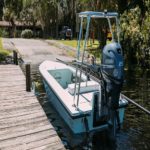
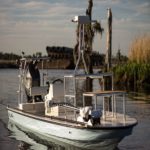
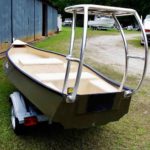
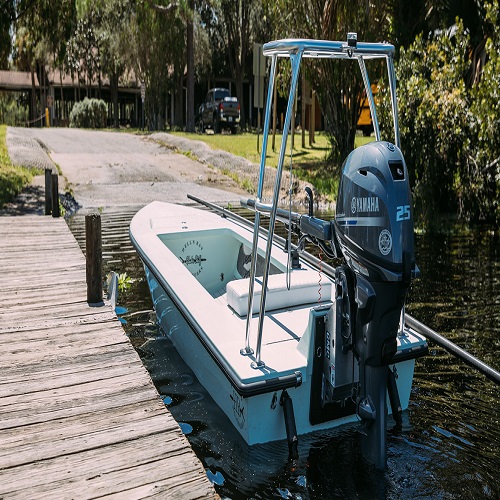
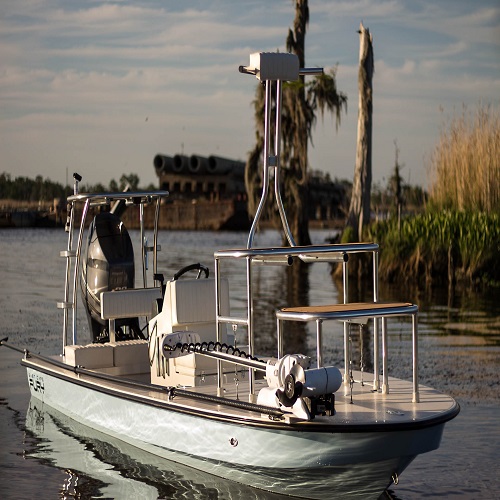
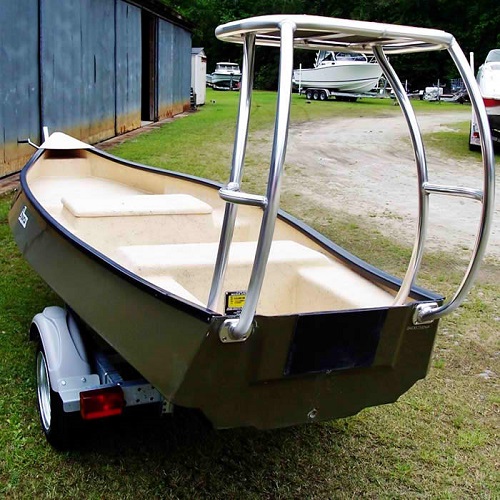
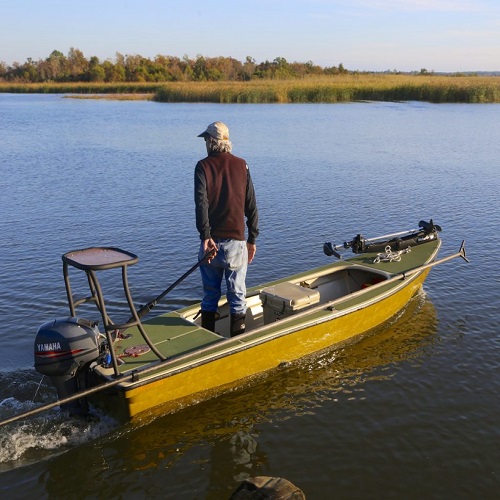
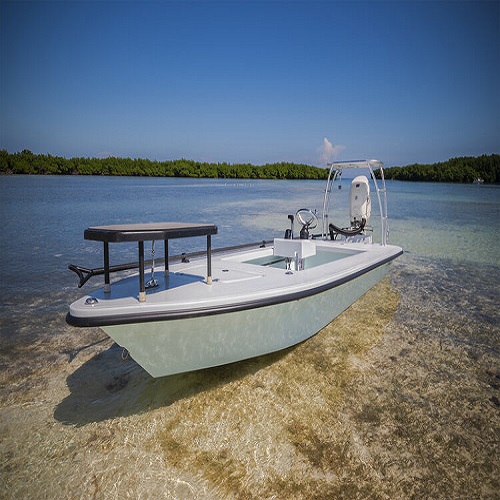
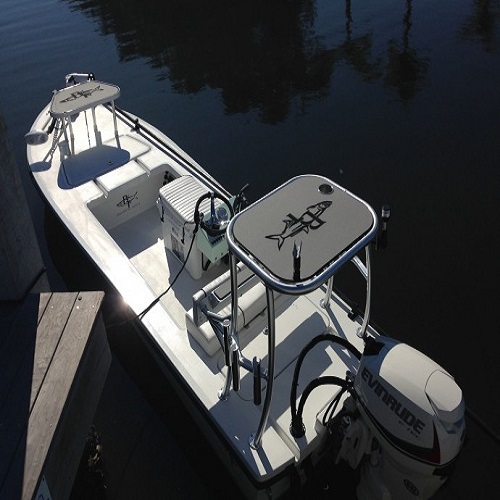
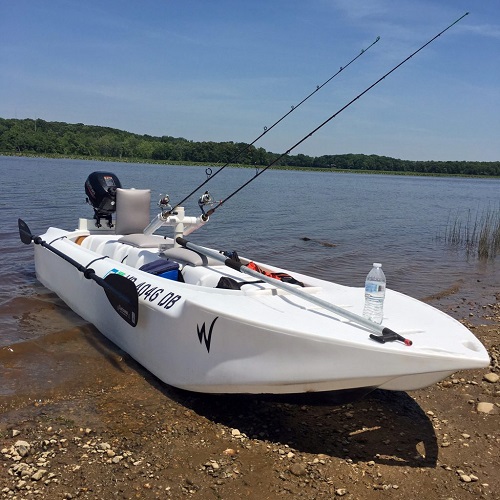



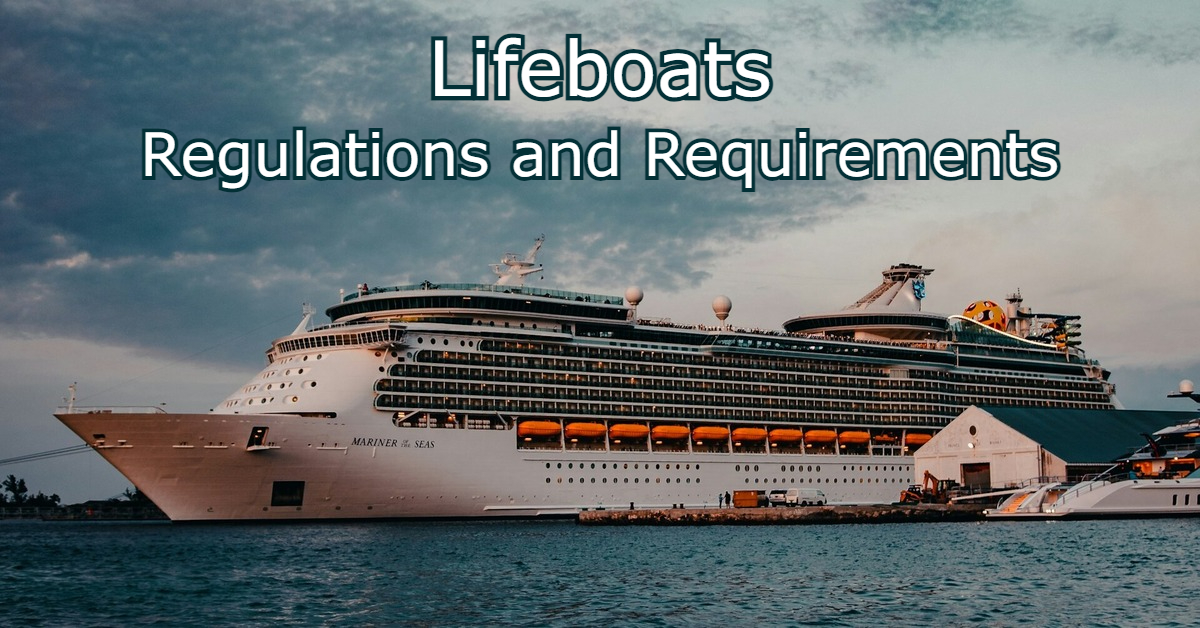
Leave a Reply